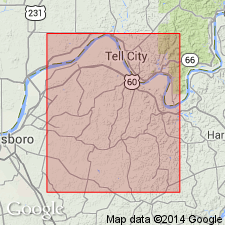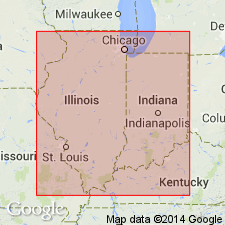
- Usage in publication:
-
- Lewisport limestone [member]
- Modifications:
-
- Named
- Dominant lithology:
-
- Limestone
- AAPG geologic province:
-
- Illinois basin
Summary:
Name Lewisport limestone introduced in this report for limestone beds lying near top of Tradewater formation in Hancock Co., KY. Present at many places in county. Rests on Lewisport coal. Is overlain by 90 ft of shales and sandstones in which are interbedded 1 or 2 thin coals. Very fossiliferous, and of same color and physical characteristics, both when fresh and weathered, as Lead Creek limestone, which lies 85 ft lower in Tradewater formation. However, fossils are not so large as those in Lead Creek. Age is Pennsylvanian.
Source: GNU records (USGS DDS-6; Reston GNULEX).

- Usage in publication:
-
- Lewisport Limestone
- Modifications:
-
- Overview
- AAPG geologic province:
-
- Illinois basin
Summary:
Physical correlation indicates that the type Perth Limestone of northern Clay Co., IN, is equivalent to the Lewisport Limestone in KY. The Lewisport, in turn, is equivalent to the Curlew Limestone. Correlations have been confirmed by faunal evidence.
Source: GNU records (USGS DDS-6; Reston GNULEX).
For more information, please contact Nancy Stamm, Geologic Names Committee Secretary.
Asterisk (*) indicates published by U.S. Geological Survey authors.
"No current usage" (†) implies that a name has been abandoned or has fallen into disuse. Former usage and, if known, replacement name given in parentheses ( ).
Slash (/) indicates name conflicts with nomenclatural guidelines (CSN, 1933; ACSN, 1961, 1970; NACSN, 1983, 2005, 2021). May be explained within brackets ([ ]).

